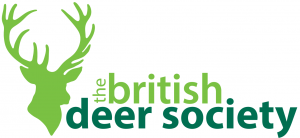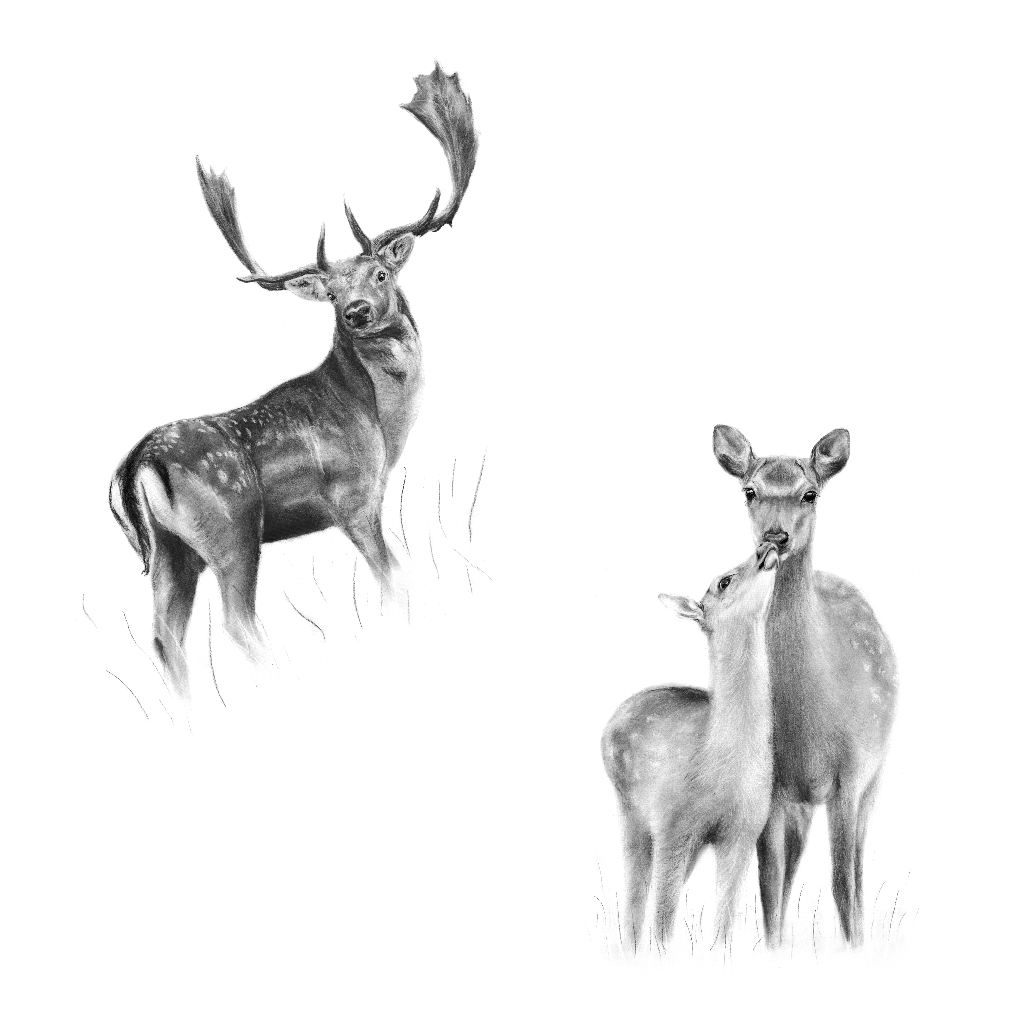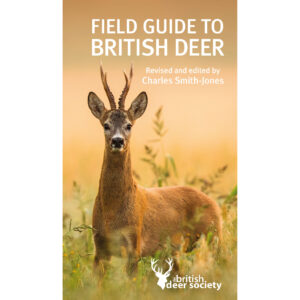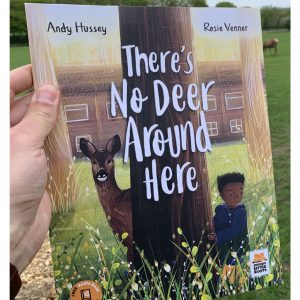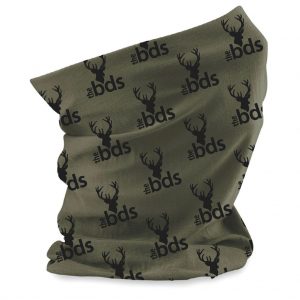Protecting Deer from Fencing Hazards
Share article:
Article by:
Beverley Challinor, Guest Blog - Deer Welfare Awareness, British Deer Society
Protecting Deer from Fencing Hazards: A Personal Journey and a Call to Action
In this heartfelt and enlightening account, Beverley Challinor shares her deep connection with the fallow deer of her local woodlands. From serene encounters to the urgent realities of deer welfare, Beverley reveals the beauty and challenges of these gentle creatures’ lives.
Through dedicated monitoring, compassionate rescues, and a growing awareness campaign, she highlights the vital role we can all play in supporting the welfare of wild deer. Join her as she sheds light on both the joys and the perils faced by fallow deer, offering invaluable guidance for anyone who might come across a deer in need.
Early Summer – 2015
Early morning, warm, misty with the promise of a hot day to come and I was walking in local ancient woodland. Just ahead of me on a grassy ride, a Melanistic Fallow buck stepped out. How handsome and majestic he looked against vibrant greens and faded bluebells. His demeanour conveying the gentle nature typical of Fallow as we held one another’s gaze. That moment was the catalyst for my ongoing odyssey with the Fallow deer on my doorstep. The moment that led to a deep passion, respect and commitment to monitoring their welfare.
I spend on average 5 days per week with these wild, free spirits. I document everything about them in notes, photographs, film clips with each encounter revealing more about their existence and challenges. They have provided me with unique insights into their behaviour, communication and how climate change is beginning to affect their life cycles. My dedication to them has been tough at times, witnessing the realities of their vulnerability alongside the wonder and joys of observing their graceful, quiet existence.
The Fallow deer in my area of the Midlands traverse woodlands, farmland, pastures, meadows and hillsides within a modest 6-8 mile radius. For those walking in the local countryside, a brief sighting of these shy, enchanting animals transforms an ordinary walk into a magical experience.
Despite human encroachment shrinking their world, the deer remain resilient. However, that encroachment does give rise to issues for wildlife generally including deer, which demand awareness and consideration.
One of the more significant hazards, most notably for bucks when the rutting season approaches, is the widespread use of a particular type of electric fencing. Whilst it is effective for containing livestock it can and does cause severe issues, particularly for bucks who are attracted to it for adornment purposes. Each year, more deer become casualties of this type of fencing suffering awful injuries, months of negotiating life with it wrapped and stuck around their heads if they aren’t killed by it. Why? Because so much of this type of fencing is used as a visual barrier and is not energized. For a few pence per week, energizing it would save so much unnecessary suffering and unpleasant deaths. The current is a proven deterrent.
In my area, the nylon mesh reinforced with fine steel wire is used extensively. Unfortunately, the bucks are attracted to it far more these days than the harmless bracken/vegetation. Though I have documented them also adorning with nylon and hessian rope, baling twine and even crime scene tape left at car accident scenes on local lanes, by far the most common is this electric fence tape. And it could so easily be avoided but for awareness and a few pence per week to energize. The mild shock from it would (and does) deter wildlife from tangling with it and ultimately prevent the user losing and having to replace yards and yards of it carried off mostly by deer.
With good people willing to help, not all of these fencing-versus-deer experiences end badly if the buck is lucky enough to be seen in trouble in the right place at the right time.
September 2023
Through private (therefore deserted) woodland I had permission to visit, on two consecutive days I came across two different bucks snagged by electric fence tape they’d adorned themselves with.
The first was a simple, safe release of a single loop from the limb on a fallen tree. I picked up a slight hand injury from the tape as I only had my hands to work with but the buck was released unharmed.
The following day, I returned to the wood to check he’d not got caught up somewhere else. He hadn’t but I did come across yards and yards of more tape in the middle of the wood stretching beyond where the eye could see. Knowing only another buck could have brought it into there, I began to collect up this hazard with the intention to remove it. Winding it around my arm as I went, freeing it from fallen trees, low branches, holly bushes etc, I suddenly felt my arm being tugged at the same time as hearing an awful commotion somewhere unseen ahead of me. Following the sound, I came across a buck attached to what was wound around my arm, and his head, caught on post and wire fencing above a ditch. He was down in the ditch fighting for his life.
I summoned the help of members of the Deer Watch WhatsApp group I had set up which included a gentleman with 40 years of experience working with both park and wild deer. With myself of little use because of the hand injury, I filmed the amazing rescue that took place that saved this buck’s life without a single drop of blood being shed. Once released, he pronked a short distance before stopping to gaze back at his rescuers with an expression of understanding and gratitude. He was saved from an agonizing, prolonged, terror-stricken, lonely death by a careful rescue overseen by a very experienced man.
Awareness is key now with this ongoing issue responsible for increased suffering year upon year.
What to Do if You Find a Deer Caught in Fencing
If you encounter a deer caught in fencing, it’s essential to call for professional help. Deer are powerful animals, and attempting to free them without experience can be dangerous for both you and the deer.
Often the best people to contact will be your nearest wildlife rescue organisation, or if appropriate, local experienced deer stalker or farm stockmen. Organisations like UKDRT may also be able to offer assistance depending on volunteer availability.
Giving precise location information, such as using the What3Words app, can ensure help arrives to the right location as quickly as possible.
In some areas the RSPCA, or even the Fire Service might be able to assist but this can depend on the resources available in the area.
Fencing Best Practices to Protect Wildlife
Electric fence tape, washing lines, football goal nets, and other urban or rural materials pose risks as deer encounter them more frequently. Here are some best practices to help reduce these dangers:
- Keep Fencing Taut and Energised: Electric fence tape should be kept taut and energised, providing a gentle deterrent to deer while keeping them safe.
- Avoid Lightweight Mesh Materials: Mesh fences constructed from materials such as nylon are hazardous to deer and should be avoided in areas they may visit.
- Tidy Up Seasonal or Temporary Fencing: After use, dismantle seasonal structures like crop protection nets or unused electric fences to prevent wildlife entanglement.
- Use Single-Strand Topping for Stock Fencing: For stock fencing, a single-strand top wire is safer for deer, reducing the risk of them getting caught.
Supporting Deer Welfare Through Awareness
The risks to deer from fencing are increasing as these animals adapt to landscapes altered by human activity. The British Deer Society encourages everyone to keep paddocks, fields, gardens, and other areas clear of waste materials that could pose a danger to wildlife. A little awareness, care, and effort can prevent immense suffering. By sharing knowledge and adopting safer practices, we can make a significant difference in deer welfare across the country.
Thank you for reading, and please share this information to help raise awareness. Together, we can protect these gentle, wild beings who bring so much beauty to our world.
Support the BDS: Become a Member or Donate Today!
As a charity dedicated to the welfare and conservation of deer across the UK, the British Deer Society relies on the generosity of supporters like you. By becoming a member or making a donation, you can directly contribute to the welfare of these magnificent animals.



